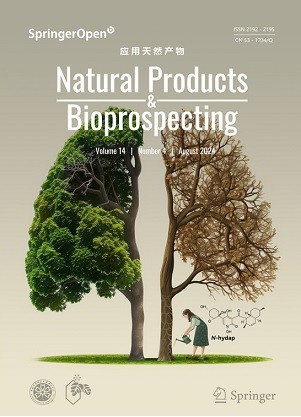Exploring anti-SARS-CoV-2 natural products: dual-viral target inhibition by delphinidin and the anti-coronaviral efficacy of deapio platycodin D
Abstract
Qingfei Paidu decoction (QFPDD) has been extensively used in clinical treatments during the severe acute respiratory syndrome coronavirus 2 (SARS-CoV-2) epidemic. SARS-CoV-2 primarily invades host cells via its spike (S) protein binding to the angiotensin-converting enzyme 2 (ACE2) on the cell membrane, mediating viral-host membrane fusion. Blocking viral entry is a crucial step in preventing infection, with the interaction between the S receptor binding domain (S-RBD) and ACE2 being a key antiviral target. Given that SARS-CoV-2 predominantly affects the respiratory system and approximately 25% of patients suffering from corona virus disease 2019 (COVID-19) with gastrointestinal symptoms, we are committed to identifying more active ingredients in QFPDD that target the respiratory and gastrointestinal tracts of COVID-19 patients. Among medicinal plants, ephedra and liquorice derived from QFPDD, along with two other Chinese herbs, Platycodon grandiflorum and Radix Rhei Et Rhizome (rhubarb), have garnered our interest. These herbs have historically been used in traditional Chinese medicine (TCM) for treating infectious diseases with respiratory and digestive symptoms. Here, we established a library containing all components of the four individual herbs gathered from the Traditional Chinese Medicine Systems Pharmacology Database and Analysis Platform (TCMSP) and performed structure-based virtual screening to identify potential ACE2/S-RBD inhibitors. Subsequently, we selected 10 ingredients from the top 30 candidates and evaluated their activities using a pseudovirus neutralization assay. Delphinidin and deapio platycodin D (DPD) showed significant antiviral potential with half-maximal inhibitory concentration (IC50) values of 45.35 µM and 1.38 µM, respectively. Furthermore, delphinidin also inhibited the 3-chymotrypsin-like protease (3CLpro), indicating its dual-viral target inhibitory potential. Notably, DPD effectively suppressed HCoV-229E replication in BEL-7402 cells. This study not only provides a strategy for rapid identifying antiviral agents from TCM in anticipation of future pandemics but also offers theoretical and experimental evidence to support for the clinical use of QFPDD.
Graphical Abstract

 求助内容:
求助内容: 应助结果提醒方式:
应助结果提醒方式:


